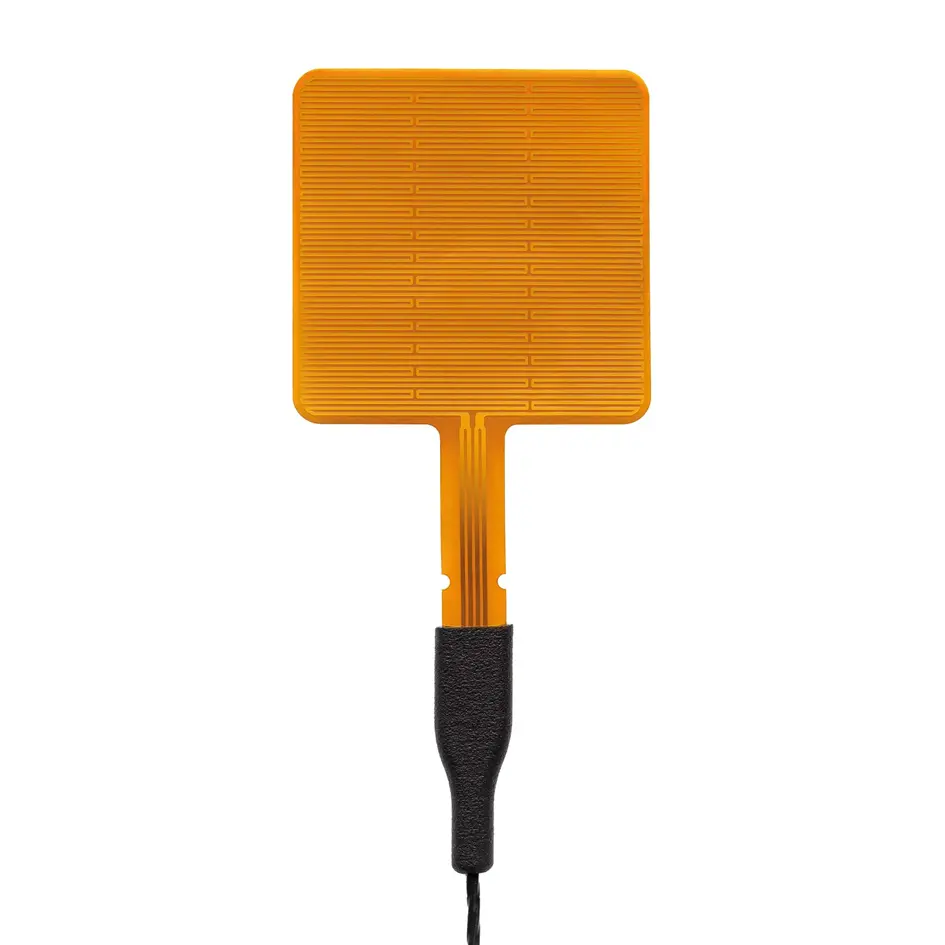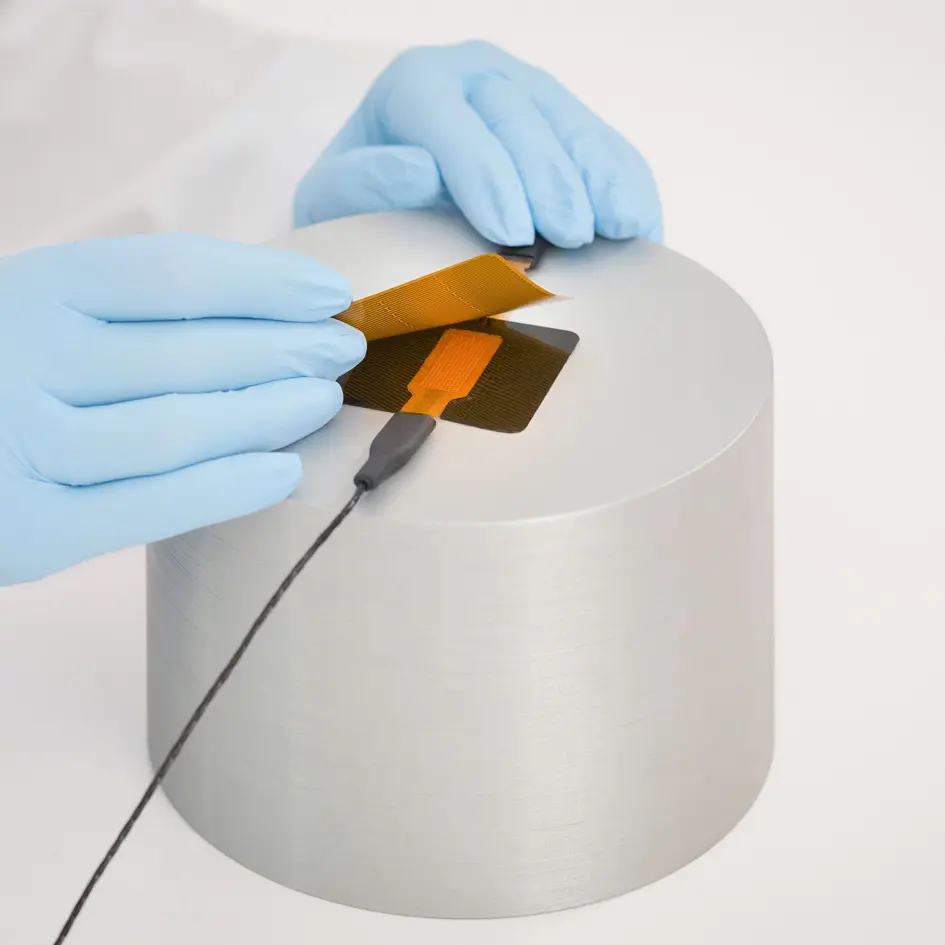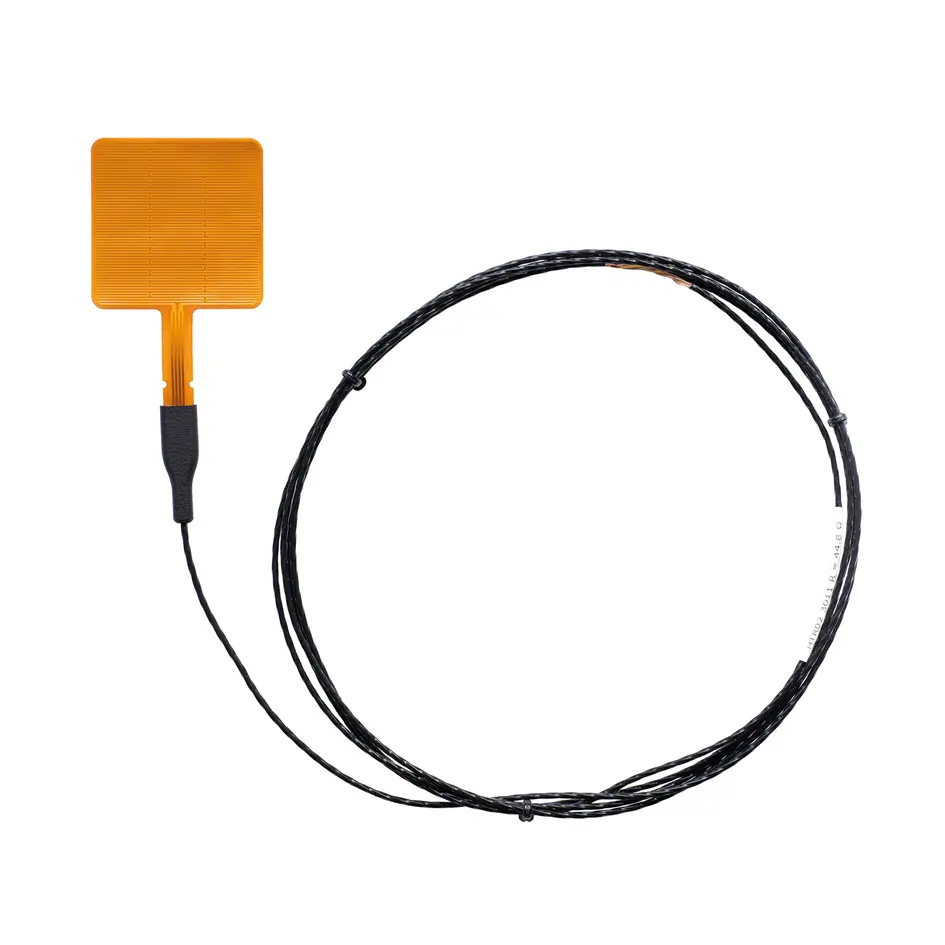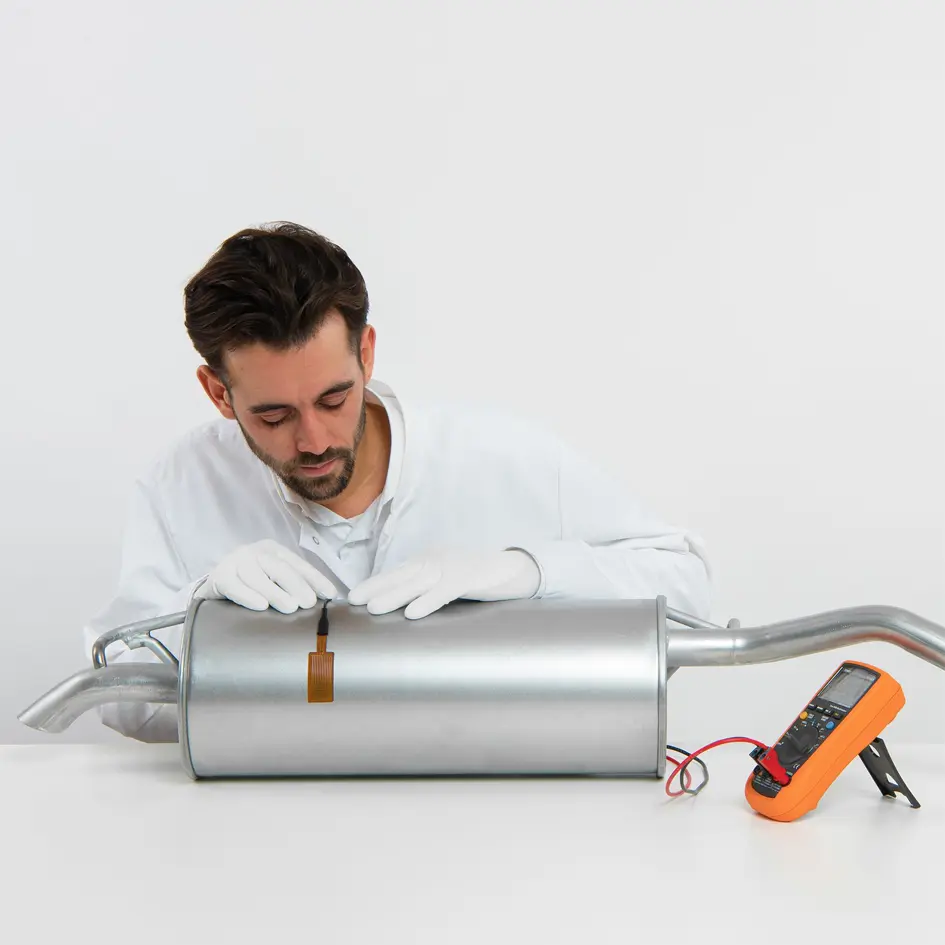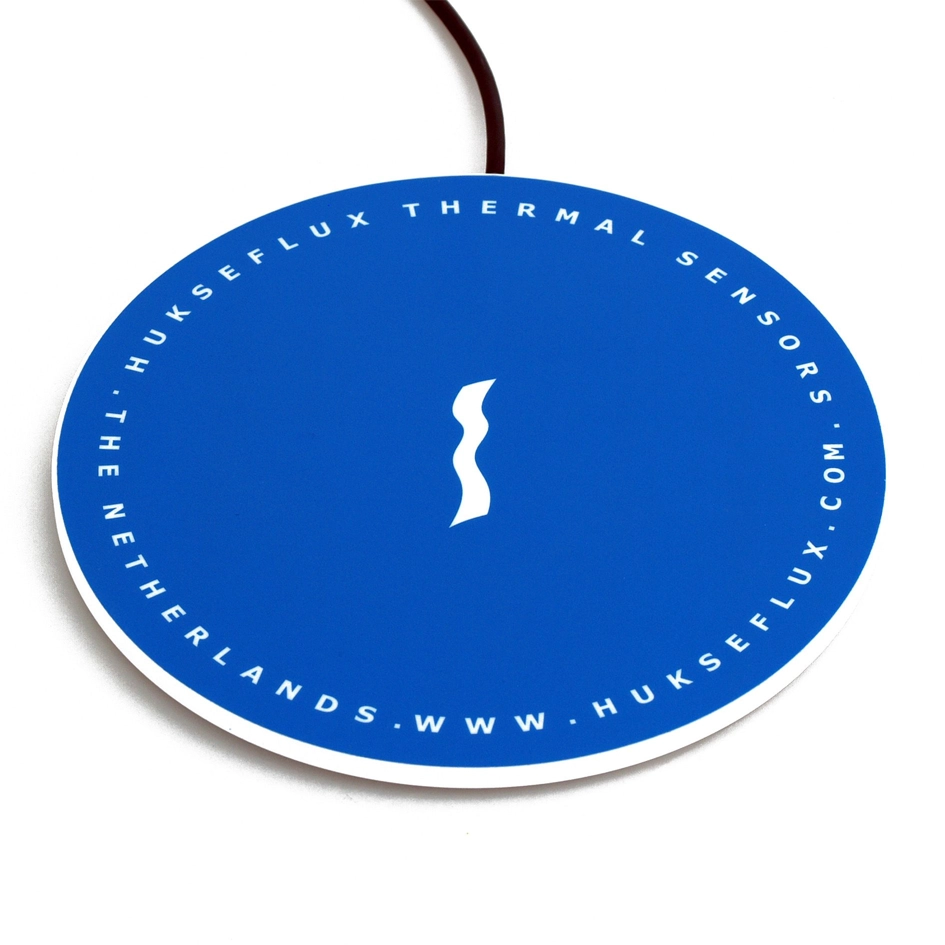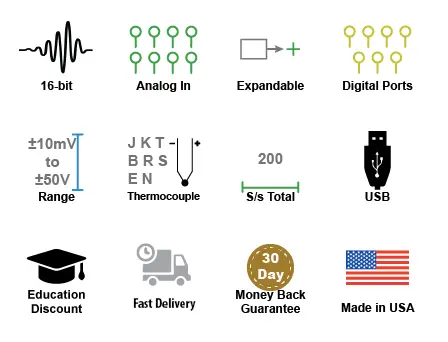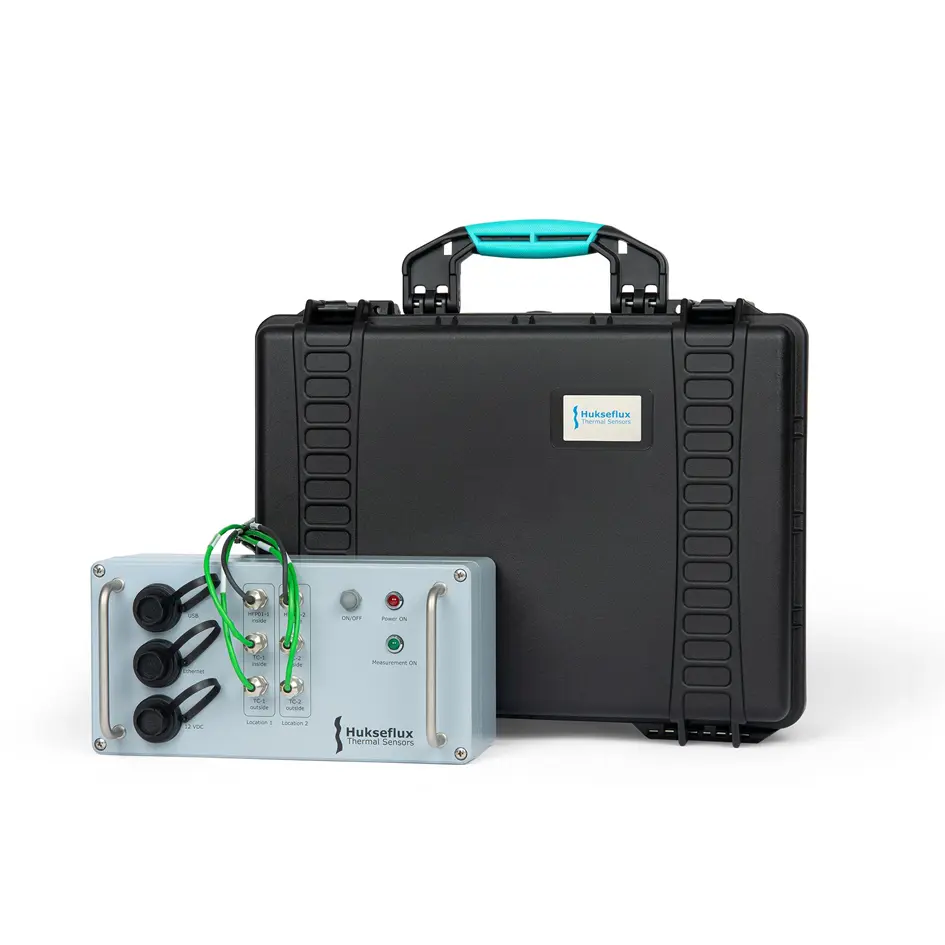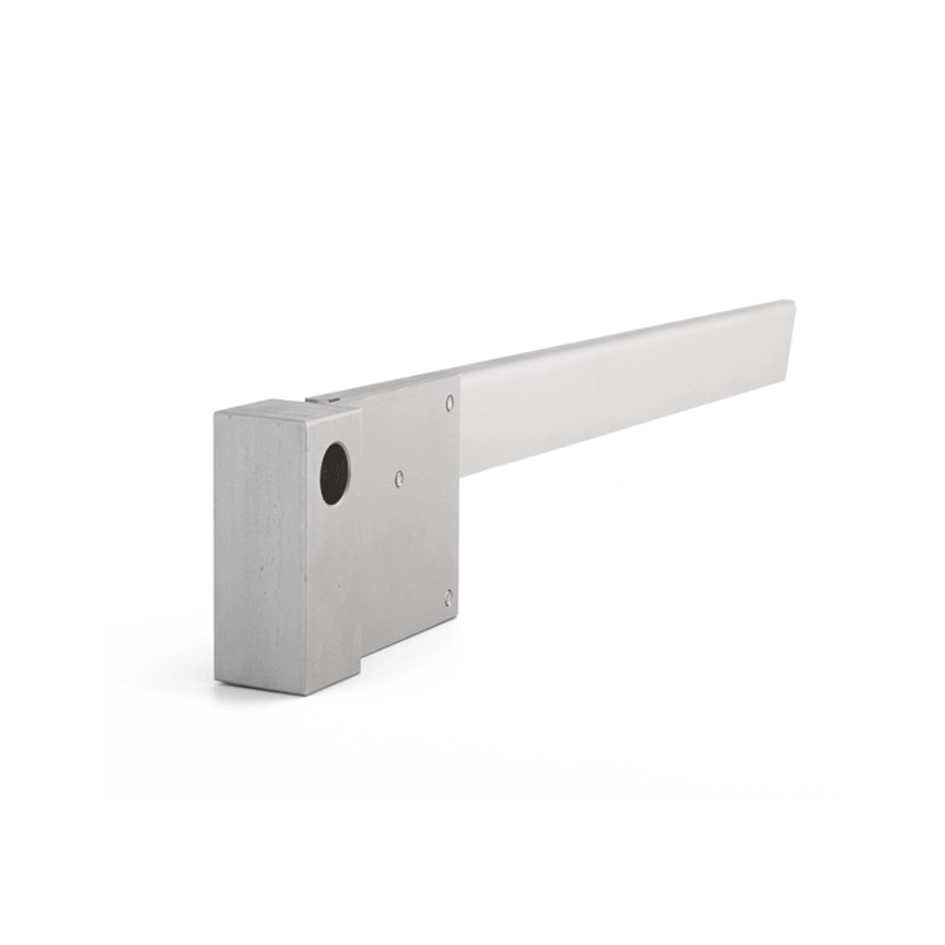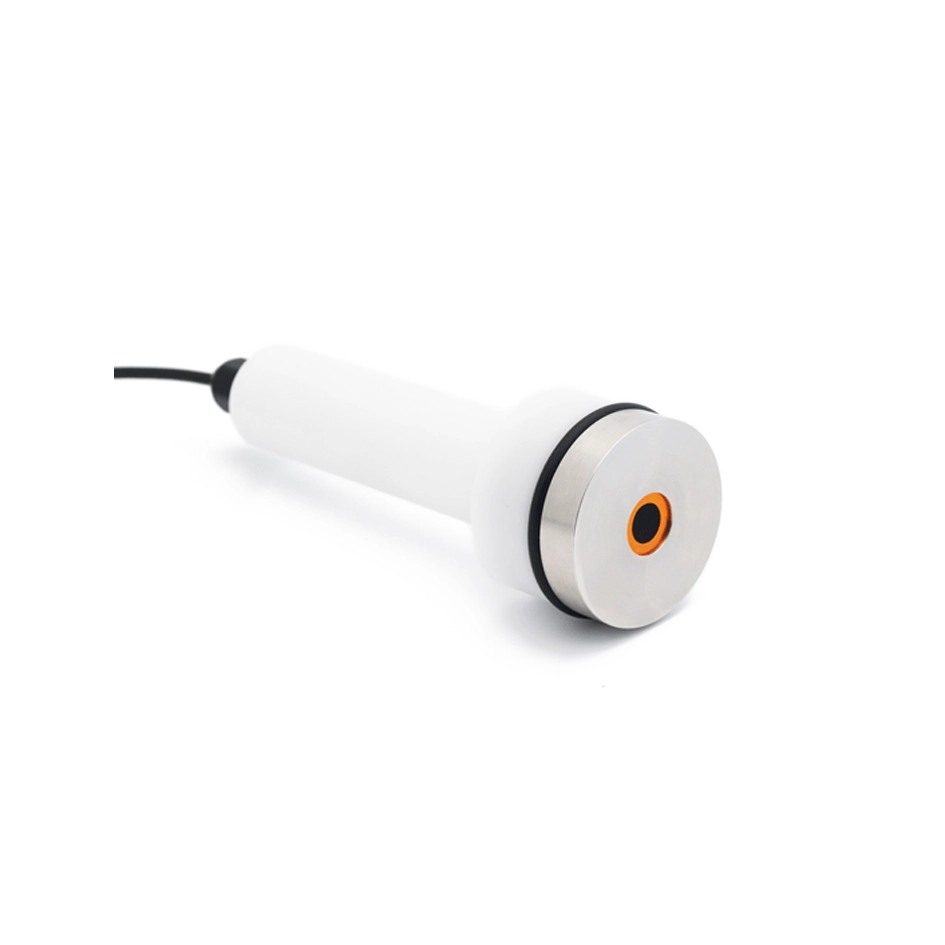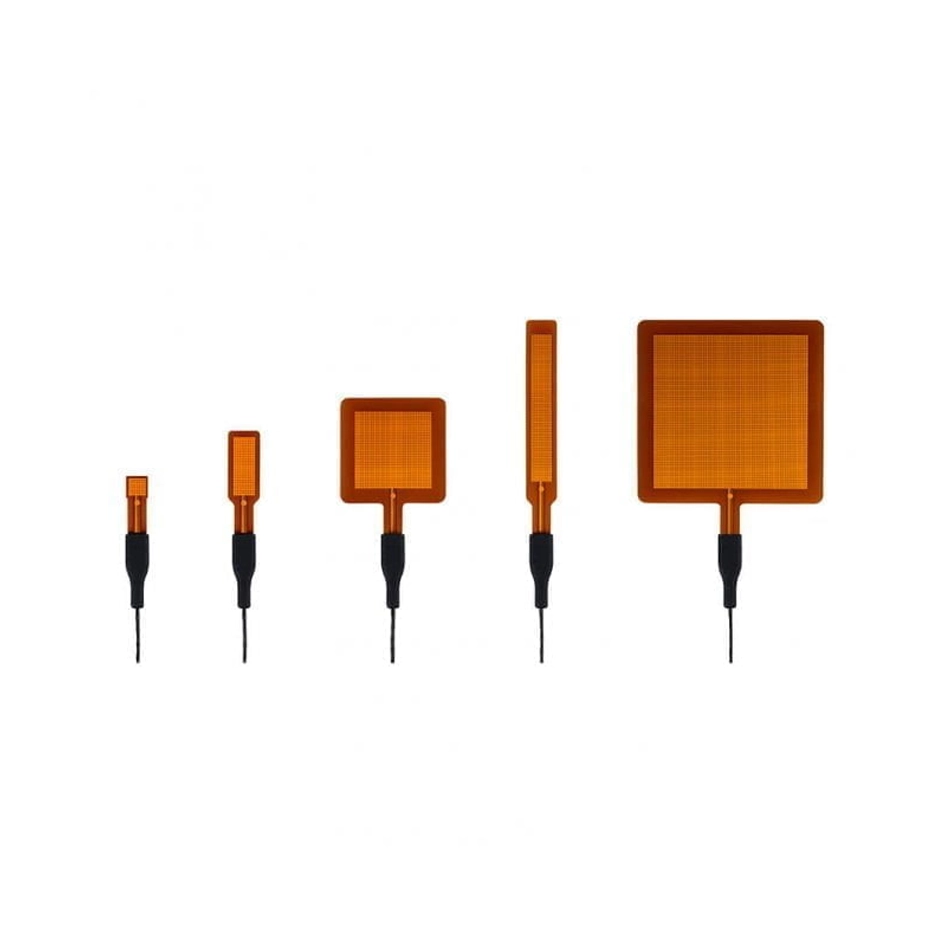Description
Specifications
| Power supply voltage |
12 VDC |
|---|---|
| Effective heater area per model | : |
| 50X50 |
2381 x 10⁻⁶ m² |
| 85X85 |
7022 x 10⁻⁶ m² |
| Heater electrical resistance per model | : |
| 50X50 |
120 Ω (nominal) |
| 85X85 |
40 Ω (nominal) |
| Heater thickness |
0.1 x 10⁻³ m |
| Outer dimensions foil per model | : |
| 50X50 |
(50 x 50) x 10⁻³ m |
| 85×85 |
(85 x 85) x 10⁻³ m |
| Rated operating temperature range – continuous use |
-40 to +150 °C |
| Heater rated power supply |
9 to 15 VDC |
| Standard cable length |
2 m (2 x 2 wires) |
| Certificate |
supplied with a certificate stating surface area in [m²] and heater resistance in [Ω] |
| Requirements for testing |
metal heat sink > 1 kg; power supply 12 VDC; 0.2 A; insulation material; voltage measurement; contact material such as glycerol or toothpaste |
| Options |
|
Overview
Measuring heat flux, users may wish to regularly check their sensor performance. A quick check is now possible with HTR02 series plus some accessories that most laboratories will have in-house. The HTR02 series heaters have a well characterized a traceable surface area and electrical resistance.
HTR02 series is a foil heater. Either it can be used in combination with foil heat flux sensors such as FHF05 series for test purposes or as a general-purpose heater.
Unique features and benefits
- makes it possible to perform a simple test
- guarantees sensor stability
- matches all models of FHF05 series heat flux sensors
- HTR02 series heaters have a well characterized and traceable surface area and electrical resistance
- supplied with product certificate stating surface area in [m²] and heater resistance in [Ω]
Heaters of HTR02 series can easily be used with all models of FHF05 series. To achieve higher measurement performance, it is recommended to make a guard for models FHF05-10X10, -15X30 and -15X85. See the user manual for more information.
Frequently asked questions
How to measure heat flux?
Heat flux sensors measure energy flux onto or through a surface in [W/m²].
The source of the heat flux may be:
- conduction
- radiation
- convection
Convective and conductive heat transfer are associated with a temperature difference. Heat always flows from a source to a sink, from a hot to a cold environment. Convective and conductive heat flux is measured by letting this heat flow through the sensor. Radiative flux is measured using heat flux sensors with black absorbers. The absorbers converts radiative to conductive energy. Hukseflux started in 1993 with sensors for measurement of heat flux in soils and on walls. In the course of the years, we have added specialised sensors and systems for many other applications.
Heat flux sensors manufactured by Hukseflux are optimised for the demands of different applications:
- rated temperature range
- rated heat flux range
- sensitivity
- response time
- chemical resistance, safety requirements
- size, shape and spectral properties
Hukseflux is the world market leader in heat flux measurement. We have prepared a white paper briefly explaining the fundamentals of measuring with heat flux sensors. It also offers general directions what to watch out for and some, perhaps surprising, applications of heat flux sensors. Take a look at our white papers.
What is a flux heater?
Flux heaters are a type of heating element that utilize electrical current to generate heat. The process involves passing an electrical current through a conductive material, such as metal wire or ribbon, which causes the material to resist the flow of electricity and become hot. The heat generated by the flux heater is then transferred to the surrounding environment through conduction, convection, or radiation.
One of the key advantages of flux heaters is their high efficiency. As they generate heat directly through the flow of electricity, they are able to convert a large portion of the electrical energy they consume into heat, making them more efficient than other types of heaters that rely on mechanical processes to generate heat. Flux heaters are also renowned for their fast heating times, as they are able to reach their full operating temperature within seconds or minutes, depending on their size and design.
What matters most when measuring with a heat flux sensor?
There are quite a few general considerations when starting a heat flux measurement.
- Representativeness in time and space; average!
A heat flux sensor measures at a certain location. Is this location representative of what you need to measure? If possible, use a relatively large sensor, rather than a small one, and consider use of multiple sensors. Thermal processes often have large time constants; instantaneous measurements may be misleading. Average to get the full picture. - Optical properties
When heat flux sensors also measure radiation, pay attention to the surface color. If needed paint the sensor surface. Please mind that shiny metallic surfaces reflect both infra-red and visible radiation. Paints may have different colors in the visible range, but are usually “black” absorbers in the far-infra-red. - Sensor thermal resistance
A heat flux sensor distorts the local heat flux. In order to minimize this effect, use the sensor with the lowest possible thermal resistance. - Edge effects
A heat flux sensor locally distorts the heat flow pattern, in particular around the edges of the sensor. A passive guard, i.e. a non-sensitive part around the sensor is essential to avoid errors due to edge effects.
There are more characteristics that matter. Please find them in our white paper on heat flux fundamentals and applications.
Which sensor(s) to use for surface energy flux measurement?
Hukseflux manufactures a range of sensors for surface energy flux measurements. All have proven reliability.
These state-of-the-art sensors are made for the global fluxnet community:
- NR01 is a market leading 4-component net radiometer.
- HFP01 and HFP01SC measure soil heat flux.
- STP01 offers an accurate temperature profile measurement.
- TP01 is the leading sensor for soil thermal conductivity.
Sensors made by Hukseflux are designed for compatibility with most common datalogger models. For many models we have example programs and wiring diagrams available.
How to measure R-value and U-value of buildings?
On-site measurements of thermal resistance, R, are often applied in studies of buildings. Alternatives are to measure its inverse value, the thermal conductance which is called the Λ-value, or the thermal transmittance which includes ambient air boundary layer thermal resistance, the U-value. The measurements of R are based on simultaneous time averaged measurement of heat flux Φ and differential temperature, ΔT, (using two temperature sensors on each on a different side of the wall).
R = ΔT / Φ
Hukseflux provides a range of sensors and measuring systems for use in measurement of the energy budget of buildings and characterization of construction materials.
HFP01 heat flux sensor and TRSYS01 measuring system are widely used for on-site measurements on walls, windows and other construction elements in building physics.
- HFP01 can be used for in-situ measurement of building envelope thermal resistance (R-value) and thermal transmittance (H-value) according to ISO 9869, ASTM C1046 and ASTM 1155 standards. HFP01 is the world’s most popular sensor for heat flux measurement in the soil as well as through walls and building envelopes. HFP01 measures heat flux through the object in which it is incorporated or on which it is mounted, in W/m². More information? Visit the HFP01 product page.
- TRSYS01 is a high-accuracy system for on-site measurement of thermal resistance, R, thermal conductance, the Λ-value, and thermal transmittance, the U-value, of building envelopes. TRSYS01 is mostly used for measurements according to standard practices of ISO 9869 and ASTM C1155 / C1046. The system is equipped with high-accuracy electronics, two heat flux sensors of model HFP01 as well as two pairs of matched thermocouples. The two measurement locations provide redundancy, leading to a high level of confidence in the measurement result. The high accuracy of the heat flux sensors and temperature difference measurements ensures that TRSYS01 continues measuring when other systems no longer perform; in particular at very low temperature differences across the wall.
Where can I find complete heat flux measuring systems?
Hukseflux, market leader in heat flux measurement, offers both sensors and systems.
These measuring systems typically include a Measurement and Control Unit and one or more sensors for measuring heat flux as well as other measurands, such as temperature and humidity. Examples are the TCOMSYS01 Hot Cube thermal comfort measuring system, including a TCOM01 sensor, and the TRSYS01 measuring system, incorporating two HFP01 heat flux sensors and two pairs of matched thermocouples.
Cannot find what you are looking for? Please contact us.

